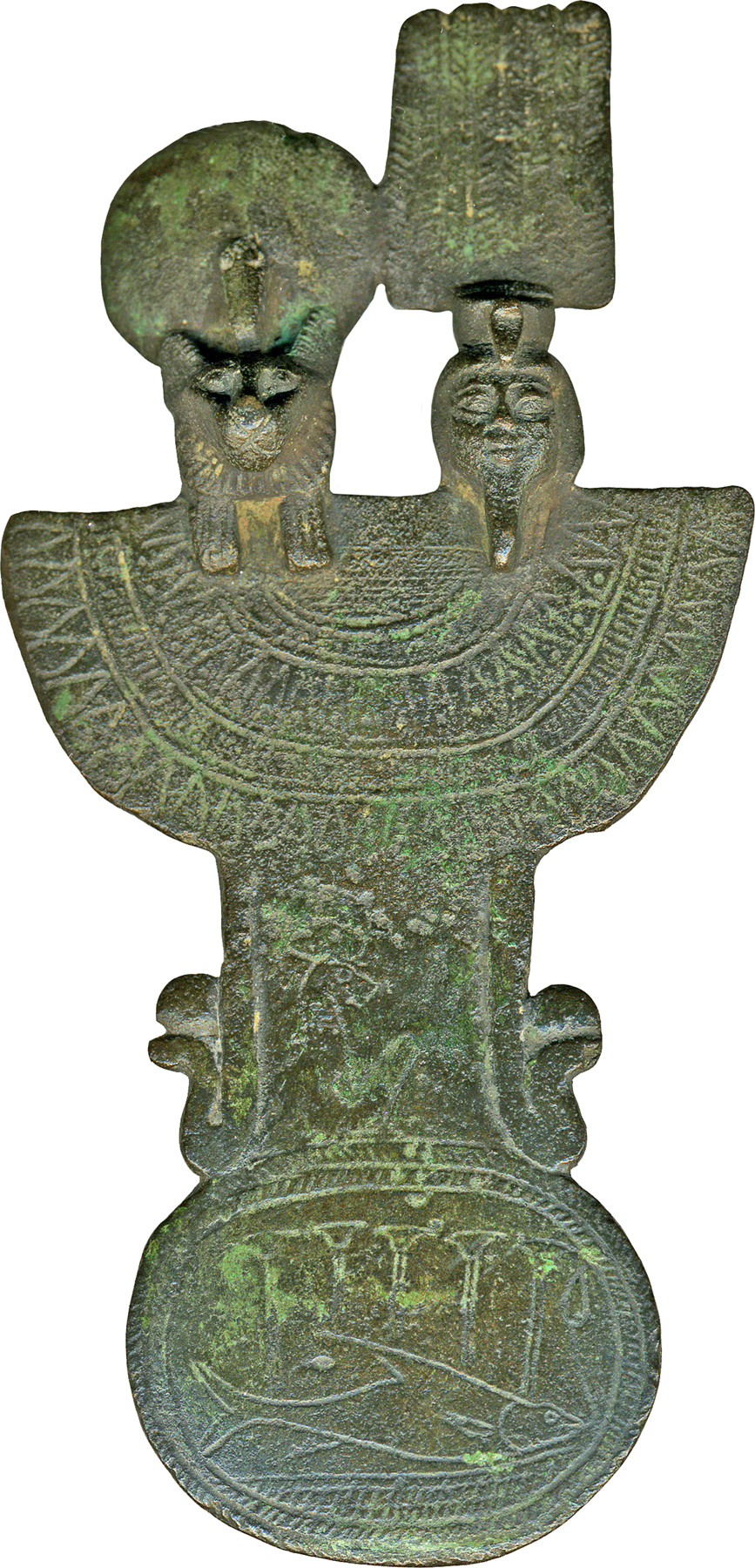Menat with the Heads of the Deities Shu and Tefnut
(Ancient Egypt and Nubia )
In rituals for the gods, special instruments were used by priests and priestesses to invoke the deities or to perform rituals before them. One of the most important instruments was the Menat, a counterweight that held elaborate beaded collars in place, used also as a noise-making ritual instrument by rattling the collar's beads. The representation of a broad collar called an Usekh (also called an Aegis, originally a Greek term for "shield") surmounted with the head of a deity functioned as a protective symbol.
This combination of the Menat and Usekh is surmounted by the heads of the divine couple Shu (god of the air) and Tefnut (goddess of moisture and corrosive air). They were the first emanations of the primeval god Atum, when he created the world. The Menat is flanked by cobra serpents; the upper part displays the squatting figure of the ram-headed sun god, while the lower part displays an oxyrhynchus fish in a papyrus thicket.
Provenance
Provenance (from the French provenir, 'to come from/forth') is the chronology of the ownership, custody, or location of a historical object. Learn more about provenance at the Walters.
Sheik of the Pyramids, Egypt [date and mode of acquisition unknown]; Henry Walters, Baltimore, 1930, by purchase; Walters Art Museum, 1931, by bequest.
Exhibitions
| 2006-2007 | Daily Magic in Ancient Egypt. The Walters Art Museum, Baltimore. |
Conservation
| Date | Description | Narrative |
|---|---|---|
| 4/30/1957 | Treatment | cleaned |
| 10/9/2006 | Treatment | coated |
Geographies
Egypt (Place of Origin)
Measurements
H: 4 7/16 x W: 2 3/16 x D: 13/16 in. (11.2 x 5.5 x 2.1 cm)
Credit Line
Acquired by Henry Walters, 1930
Location in Museum
Not on view
Accession Number
In libraries, galleries, museums, and archives, an accession number is a unique identifier assigned to each object in the collection.
In libraries, galleries, museums, and archives, an accession number is a unique identifier assigned to each object in the collection.
54.1515








